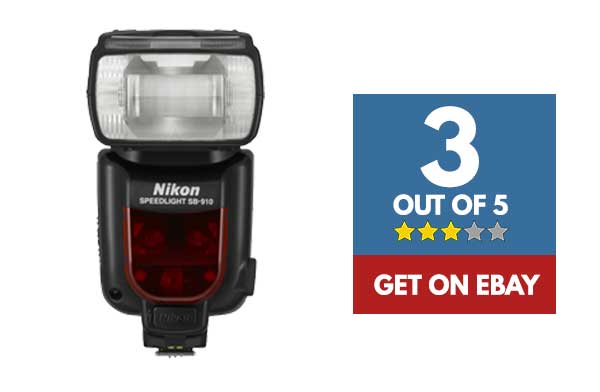BAD “TOP QUALITY” FLASH
Welcome to a review of the Nikon SB-910 flash. This flash unit used to be the top of the cream Nikon flash, but it has since been taken over – Is it still worth the money to get one of these “old top quality flashes”?
Now, I have personally been a long time Nikon user, and the SB-910 is actually one of my earliest buys… But I have to honestly say this – I regretted buying this gadget, and I have no love for Nikon flashes ever since. Read on to find out why.
THE OVERVIEW
| Price | About USD 250 (for a used set, as at the time of writing) |
| Links | Official Website: Nikon SB-910 Get from eBay: Click here |
| Package | All the basics – Flash, stand, color gel, diffuser, carrying case. |
| Build Quality | Seems to be solid, but broke a little after 2 years. |
| Functionality | TTL, HSS, slave mode. |
| User Friendliness | Has a learning curve, but nothing too bad. |
| Value | Overpriced, but still decently good flash. |
| Overall | Good enough specs, but badly priced and not well-built. |
TABLE OF CONTENTS
 Section A Section AUnboxing |
 Section B Section BWalkthrough |
 Section C Section CUsage & Experience |
 Extra ExtraSpecs & Useful Bits |
 Closing ClosingFinal Thoughts |
UNBOXING & FIRST IMPRESSIONS

The Nikon SB910 comes in the usual “standard gold-black Nikon box”. Nothing outstanding, but the stuff inside makes up for the lack of “wow”.
WHAT’S INSIDE?
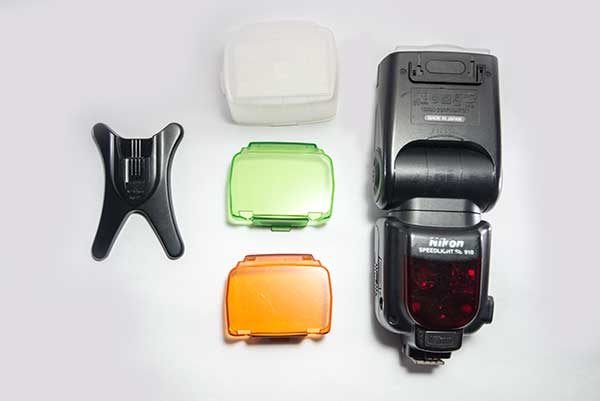
The Nikon SB910 flash package comes with:
- The flash
- Diffuser cap
- Warm and cold correction gels.
- Flash base
- A carrying case (not in the photo as I lost it).
First off, I have to give Nikon some credits for coming up with this “complete package”. But while it does seem to be a good deal at the first impression, I have paid nearly $500 back then… Is it really worth this much money? Probably not.
Just hop onto eBay or Amazon, and you will find that these diffuser caps and correction gels are only worth a couple of dollars. Nothing within this package really summed up to the $500 for me, and I really cannot commend it any further – Given the price, Nikon could have better value-added with a snoot, more color gels, and a dome diffuser.
FLASH WALKTHROUGH
 All right, let us now take a closer look at the Nikon SB-910, the once crowned king of flash… At least within the Nikon range itself.
All right, let us now take a closer look at the Nikon SB-910, the once crowned king of flash… At least within the Nikon range itself.
QUICK WALKTHROUGH
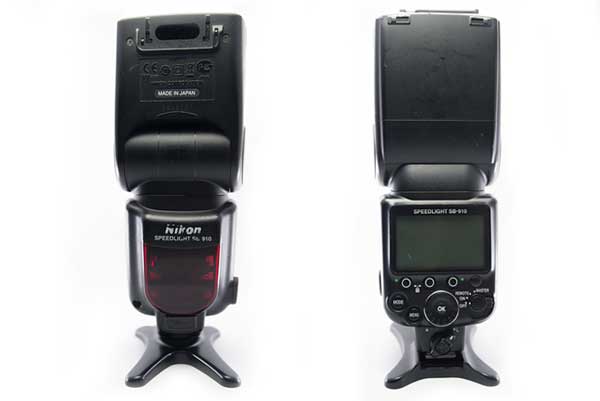
There is nothing much in front of the flash unit, just the usual AF assist illumination light. The back holds a complicated control panel, and it is not easy to figure out without the instruction manual nor watching a YouTube video.
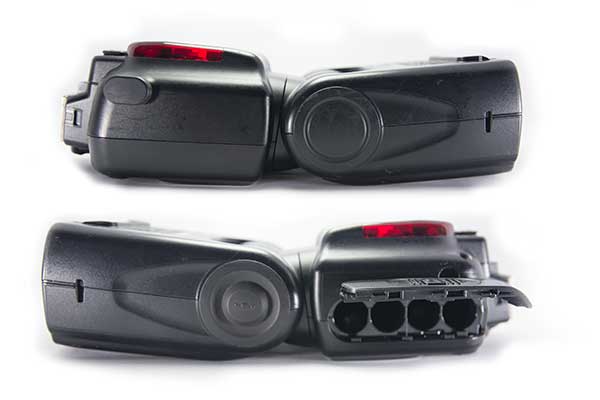
Nothing interesting on both sides too, just the battery compartment – Takes 4 AA batteries. But know that the head rotates around 180° and is able to tilt from -7° to 90°.
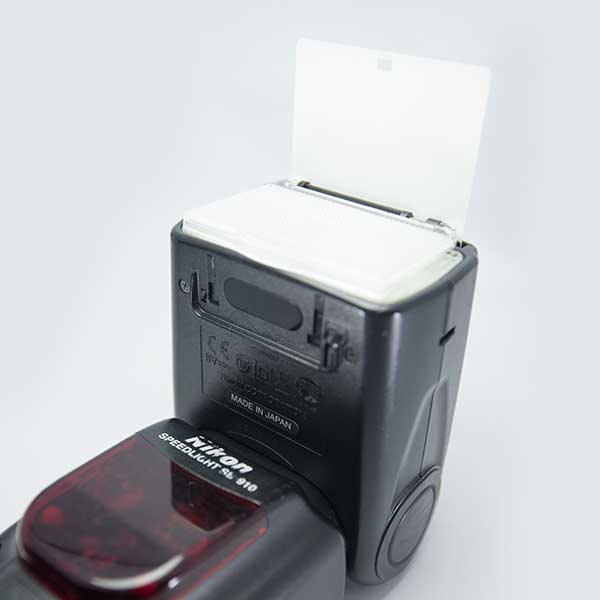
The flash also comes with a built-in bounce card and wide-angle diffuser… All of these made in Japan, if it matters to you.
CONSTRUCT & BUILD QUALITY
The Nikon SB-910 is solid plastic all around. The build quality actually feels pretty good and definitely does not have that “cheap plastic” written all over… But just after a year of usage, problems with this “top quality” flash start to show up bit-by-bit. More on that below.
USAGE EXPERIENCE
 The SB910 was good while it worked… But just like other “disposable electronics”, it went bad after the warranty period and went straight downhill.
The SB910 was good while it worked… But just like other “disposable electronics”, it went bad after the warranty period and went straight downhill.
SHOOT EXPERIENCE
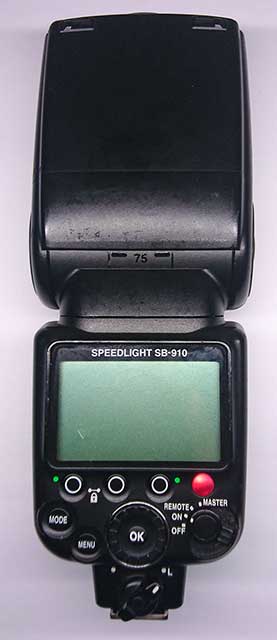
From the battle scars of the above pictures, you can kind of tell how much I have worked with the SB-910. It was my primary workhorse, and the first year of using this flash is just smooth sailing – I did not experience any overheat locking nor misfires within 2 years of usage.
The only initial struggle I had was with the rather complicated controls and menu system – Nothing too bad, and watching a few YouTube tutorials “fixed” that. Also on the plus side, I must give credits to the rather accurate TTL that the SB-910 offers. It is an official Nikon after all.
The battery life is not too shabby either, a set of fully charged AA batteries will survive hours on this flash, although nearly dead at the end of it.
MECHANICALLY UNSOUND
After the warranty period, the SB-910 just goes downhill quickly. First, there is some sort of catch/sensor under the flash head. Yes, the flash is able to detect if we have put on the diffuser cap/color correction gels/wide-angle diffuser and adjust itself accordingly.
But the problem is, those tiny pins wore out after a year of usage. It became “confused”, and decided that the wide-angle diffuser is put on when it is not. It took some twisting and shaking every time to “restore its sanity”, which is quite annoying.
After 18 months of usage, the electronics start to act strangely. The menu will go garbled sometimes, and the flash just hangs. The final straw came after 2 years, when the internal electronics gave up. The control panel went bonkers and I simply couldn’t do anything with it anymore.
Took it to the Nikon service center, won’t service an end-of-line device. Took it to a third-party repair shop, they recommended to just buy a new one – Repairing it will take over $150, and I eventually decided to just buy a new one.
THE SPECS & CONTENDERS
 That’s all for this review, and here is a small section on some extras and links that may be useful to you.
That’s all for this review, and here is a small section on some extras and links that may be useful to you.
THE SPECS & CONTENDERS
There are plenty of alternatives for the Nikon SB-910, and I am just going to compare it with 2 third-party flash units to illustrate my point – The SB-910 is grossly overpriced. Even the newer SB5000 is priced at around the USD500 mark.
| SB-910 | YongNuo YN568EX III | Godox TT600 | |
| Guide Number (at ISO100) | 34 (35mm zoom) | 58 (105mm zoom) | 60 (105mm zoom) |
| Recycle Time (Fastest, with new batteries) | 2.3 secs | 2 secs | 2.6 secs |
| Weight | 420g | 350g | 400g |
| Size | 78.5*145*113 mm | 60*73*190 mm | 64*76*190 mm |
| AF Illum Assist | Yes | Yes | Yes |
| Built-in Wireless | No | Yes | Yes |
| Price (USD) | About 500 | About 100 | About 65 |
GUIDE NUMBER?
For you guys who are new to guide number (GN), it is basically a means to determine how powerful the flash is. The SB-910 is rated GN34 at ISO100, meaning, the flash is able to light up objects up to 34 meters away from the flash unit when taking a picture at ISO100. Technically, the higher the GN, the better.
But take note of the other setting – The flash head is set to 35mm zoom so that it lights up a wider and not further area. The YongNuo and Godox are able to reach much further because the flash head is set to a narrowly focused beam of light at 105mm.
The SB-910 should have a fairly similar reach at 105mm, but my point here being, a “cheap” flash unit is able to perform just as well as the SB-910… At 1/5 the price of it.
OVERHEATING HISTORY ON THE SB-910 AND SB-900
The SB-910 is the successor of SB-900, which some long-time Nikon fans should know the saga. The SB-900 overheats when heavily used and shuts itself down. By shut down, I literally mean that it locks itself up until the unit is cool enough to work again.
This pissed off quite a lot of Nikon users back then, and a locked unit is no good for professionals who are on the job. Nikon then kind of “fixed” the design of the SB-900 with “better heatsinks”, and that became the SB-910… Even though there are still a few rumors that the SB-910 still overheats.
THE GOOD
- Decently powerful flash.
- Good battery life.
- Accurate TTL.
THE BAD
- Way too overpriced. You can get 5 good 3rd party flashes for the price of one Nikon flash.
- Broken after 2 years of usage.
- Bad value for money.
FINAL THOUGHTS
 Sorry Nikon, you produce some pretty good cameras, but the flash units are really not the best in the market. The SB-910 is one of the first flashes that I have purchased, and it left me disappointed. Never again will I buy a Nikon flash. Not until Nikon can produce some good ones that are comparable to the rest of the market.
Sorry Nikon, you produce some pretty good cameras, but the flash units are really not the best in the market. The SB-910 is one of the first flashes that I have purchased, and it left me disappointed. Never again will I buy a Nikon flash. Not until Nikon can produce some good ones that are comparable to the rest of the market.
As for my advice for you guys who are looking to buy the SB-900, SB-910, or SB-5000 – Please don’t waste your money, unless it is a second-hand set that you can get for cheap. Just forget about it and go spend your money on something more affordable and better.
Don’t let the word “third-party” turn you off. I have used Godox and YongNuo many years now, and they have not failed me.

